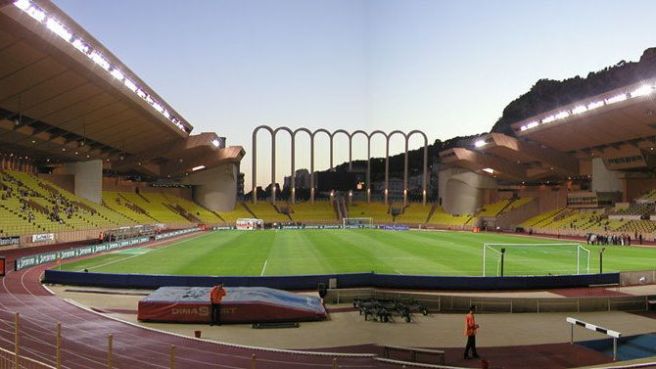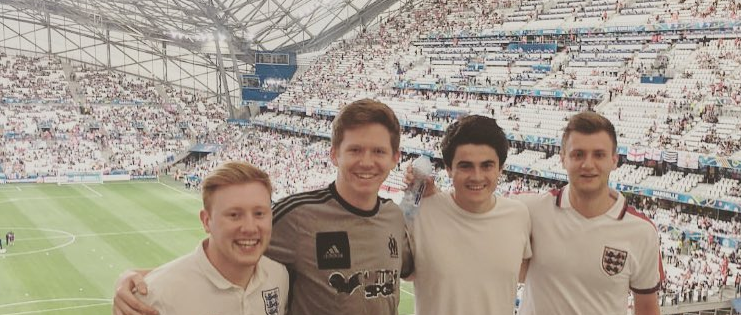
Published on The Football Pink on 30th November 2018 at: https://the-football-pink.squarespace.com/posts/2018/11/30/the-monaco-mystery-why-does-such-a-big-club-have-so-few-fans
In recent months, you’d be forgiven for putting the lack of fans in the stands at the Stade Louis II down to the dismal performances on the pitch. Leonardo Jardim started the 2018/19 season with a win away at Nantes, but since then, things could barely have gone worse. AS Monaco suffered their worst ever defeat in European competition, have picked up just one win in 13 matches, and find themselves in the relegation zone of Ligue 1. Thierry Henry was recruited to the post of manager in mid October.
Nevertheless, it’s not Monaco’s poor form that has kept the fans away. This is an issue which has plagued the club for decades. Since 1990, the highest average league attendance over a season was 11,061 out of a capacity of 18,523, in 2006/07. Last year, Monaco finished in second place domestically whilst averaging just 49.9% attendance for their home games. By comparison, Metz, who finished dead last, mustered 55.6% turnout in a bigger stadium, despite regular humiliations at the Stade Saint-Symphorien.
Monaco is a microstate of fewer than 40,000 inhabitants and at first glance this looks to be a good reason for their lack of support. Normally, however, there is no strong correlation between local population and attendance figures. EA Guingamp is based in a village of 7,000 people, yet sold 5,000 more tickets per home match than the Monégasques last season.
In the case of Guingamp, and most other Ligue 1 clubs, their nearest opposition team is at a safe geographical distance, leaving football enthusiasts in the region that are desperate for live action little choice but to follow their closest team. French Riviera neighbours Nice boast almost ten times the population of Monaco, along with a top flight football team to boot, providing stiff competition for supporters.
And think about the word “Monaco”, what comes to mind? Is it the marina? Is it the F1 Grand Prix? Or is it Monte Carlo Casino? Whatever it is, it will be something expensive. A bottle of water costs double across the open border and a post match trip to McDonald’s will take a few extra euros out of your pocket.
Combine the cost factor along with the geographical proximity of Nice and Monaco, and you have a natural gravitational pull of fans in surrounding villages who will pledge their allegiance to the former. It makes sense to travel an extra few kilometres to save a significant amount of money on a weekly basis.
On the other hand, you would expect a club of Monaco’s recent success to at least be able to attract younger fans en masse. In this world of social media and football celebrities, a marquee signing can bolster fan bases massively. Upon signing Cristiano Ronaldo from Real Madrid, Juventus saw their social media gain hundreds of thousands of followers across the board, with their Instagram account alone gaining over 1.4 million users within a week. This does not translate directly to filling a stadium, but among Europe’s elite it certainly brings much welcomed exposure and several fans make the pilgrimage to see their favourite player.
At Monaco, their transfer policy is one of the most unique in Europe. The club has a rich tradition of bringing young players through their academy and sending them off to pastures new following first team exposure. Even their current manager joined the side at the age of 15 and left after five years for Italian giants Juventus. Nowadays, this ethos has become even more aggressive, as the board seem happy to sanction sales of players after just 12 months.
Keita Balde joined from Lazio for €30 million but found himself back in Serie A with Inter Milan this summer at an eventual cost of €36 million, once the Italian side complete their obligatory purchase in 2019. The Senegalese had a mixed season in Ligue 1, but as soon as an opportunity arose for profit to be made, the board were happy to cash in.
Few players are able to integrate themselves into the team long term, and consequently fans struggle to become invested emotionally the side. Six Monaco players were voted in to the UNFP (PFA equivalent in France) Team of the Year in the 2016/17 campaign, when Leonardo Jardim’s side won a shock league title. By the start of the following season, three of these players, alongside others, had been sold to European rivals.
While this benefits their coffers, money is rarely reinvested in large amounts these days, with the owners preferring to keep a net profit on transfers. Most of the money which goes back into the first team is typically spent on footballers who have made their name at smaller clubs but see Monaco as the stepping stone to a larger team. These players are not marquee signings, nor are they intended to be. Once again, the priority is on churning an eventual profit from the squad and not with providing fans with a big name signing.
Players like Aleksandr Golovin, who chose to join Monaco despite links with Chelsea after a successful World Cup, is the biggest name the side have signed in years, even though he was barely heard of prior to Russia 2018. He chose Monaco as it should act as a springboard to establish himself in a top five European league, with hopes to advance later in his career.
This high player turnover also doesn’t allow fan favourites to establish themselves. Even Falcao, who joined the side in 2013, has spent two years on loan and only has 86 league appearances to his name with Monaco.
In recent weeks, this lack of ambition has received some more explanation: owner Dmitry Rybolovlev has been arrested over allegations of his financial involvement in Monaco’s transfers. The Russian allegedly received €124 million as part of the transfer of Kylian Mbappe to Paris Saint Germain.
For all the criticism of PSG on multiple fronts, no one can deny their ambition to make the club the best in the world. The board have invested enormous sums of money into the first team and the “brand” of the club. Despite their shortcomings on the European stage, this has been a largely successful operation, as celebrities visit the Part des Princes regularly and the club gains the lion share of both domestic and international fans compared with other Ligue 1 clubs. L’Equipe reported in March 2018 that PSG is now the most popular club in France with 22% of surveyed people stating that the capital based club is their favourite team, ahead of Marseille with 20%. Monaco ranked just fifth with 8%.
Moral ground has rarely been a motivator for fans to leave a club. Look at Manchester City, owned, in effect, by the state of the United Arab Emirates who have many misgivings, but they are as popular a club as they have ever been in their history. The ownership of the club is seldom cited as a reason to avoid supporting the side. Monaco need not be worried about losing support due to the recent allegations against Rybolovlev, but this should act as a wake up call. If the money is correctly invested in both players and the brand of the club, PSG’s model is one that could be mirrored.
Monaco certainly have several factors out of their control for attracting fans; the club can’t relocate from the principality, and will always have their neighbours Nice next door. Nor can they change the cost of living in the state. Indeed, this acts as a major plus for players who are looking to live in the tax haven and live a luxurious lifestyle.
Nevertheless, a club with as much history and recent success as the Mediterranean side should be far more popular both at home and internationally. It is time for the owners to prioritise the club ahead of themselves or make way for others who will. Their domestic rivals are discovering that a heavy short term investment can work wonders for a club in the long term, as PSG become one of the most recognisable clubs globally. Monaco need to end their time as the selling club of Europe and hold onto some of their most prized possessions. This, combined with more ambitious international marketing should turn the tide, and give the club the support it deserves
